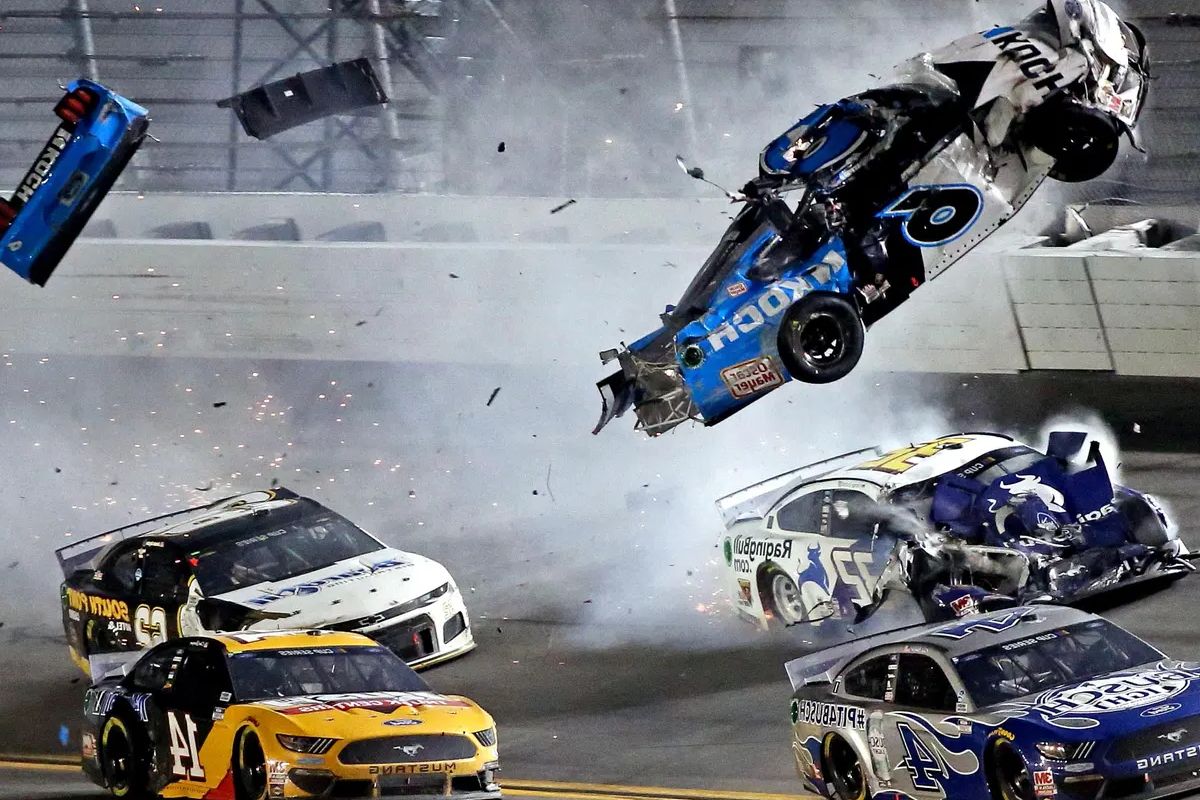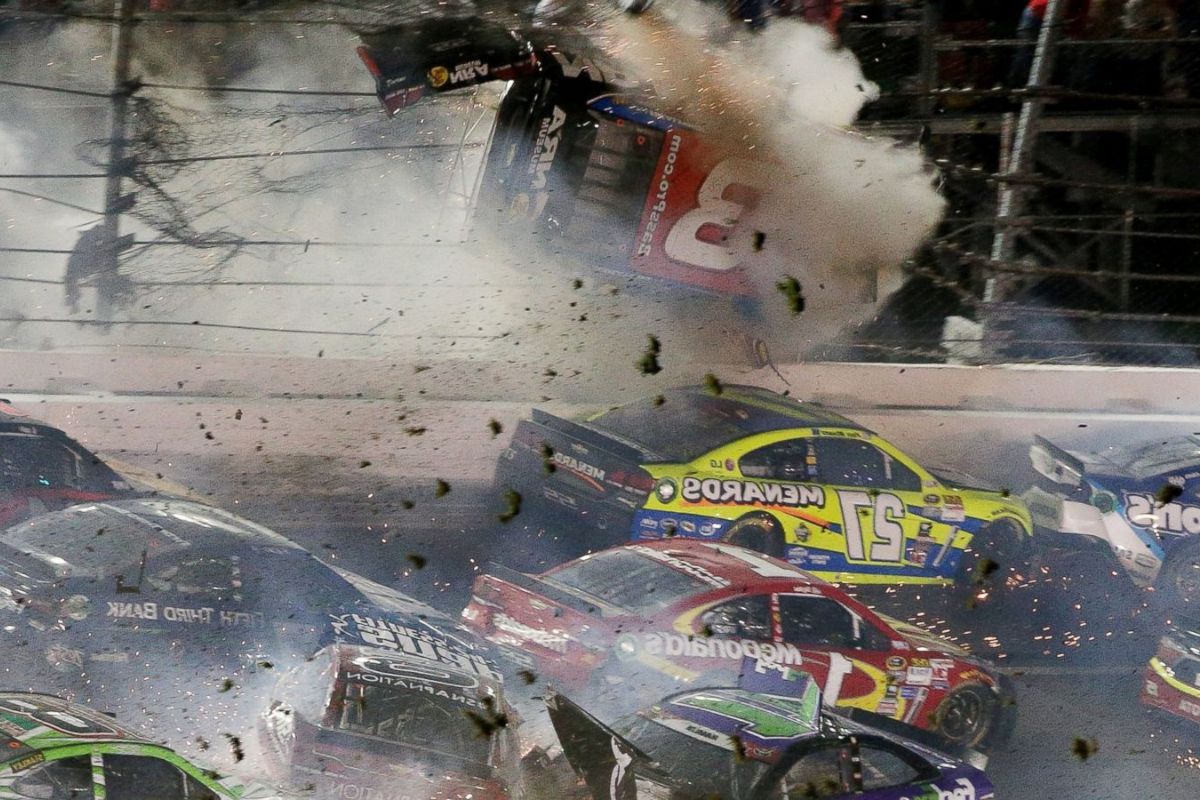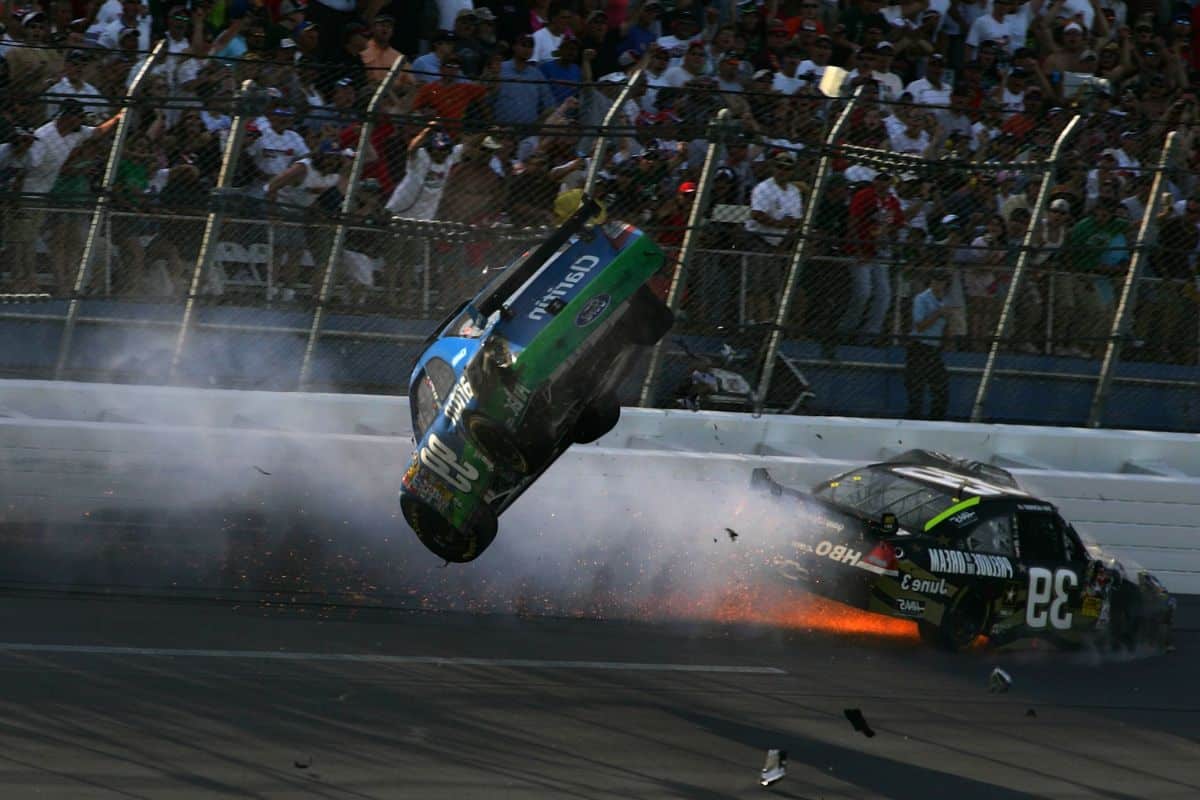The NASCAR Insurance Mystery: NASCAR, a sport synonymous with speed and adrenaline, holds a lesser-known secret within its realm – the intricate world of insurance. As drivers zoom around the track, little do fans know about the risky business behind the scenes.
What if I told you that when it comes to car insurance, NASCAR teams operate in a way that defies traditional norms?
The mystery of how these high-speed organizations manage risk and financial responsibility unveils a fascinating insight into the world of motorsports.
Key Takeaways
- NASCAR teams opt for unique insurance strategy focusing on individual parts to manage high costs.
- Financial responsibility for repair and replacement falls entirely on NASCAR teams, lacking traditional car insurance safety nets.
- Insurance challenges arise due to blurred accident definitions in NASCAR’s high-risk, close-quarter competitions.
- NASCAR drivers, as independent contractors, must secure their own insurance, with costs influenced by various factors like age and history.
NASCAR Teams’ Unique Approach to Car Insurance: No Policies for Wrecks
In a bold departure from traditional insurance practices, NASCAR teams have adopted a unique approach to car insurance by forgoing policies specifically for wrecks. Rather than insuring the entire car, teams like Joe Gibbs Racing have shifted their focus to purchasing individual parts and pieces.
This unconventional strategy, as explained by Joe Gibbs Racing president Dave Alpern, aims to mitigate the high costs that come with insuring an entire race car. Alpern points out that the value of the car itself might be eclipsed by the expenses incurred through traditional insurance, especially considering the frequency of wrecks in NASCAR races.

The Financial Risk: Teams Bear Full Responsibility for Wrecked Cars
Teams in NASCAR willingly shoulder the full financial responsibility for repairing and replacing wrecked cars, a decision that highlights their unique approach to handling insurance in the sport. Despite the significant financial investments made in building these race cars, teams opt not to insure them against wrecks. This strategic choice results in teams facing immense pressure when accidents occur, as they must bear the entire burden of repairing or replacing the damaged vehicles.
Dave Alpern’s clarification on the matter emphasizes the high stakes involved, with teams having no safety net from car insurance to rely on. The video accompanying this discussion sheds light on the financial strain teams experience due to this lack of coverage.
The following points further illustrate the financial risk teams undertake by not insuring their race cars:
- Teams invest heavily in building race cars.
- Teams must cover all repair and replacement costs for wrecked cars.
- The decision not to insure cars adds significant financial pressure.
- Dave Alpern highlights the responsibility falling entirely on the race teams.
- The video emphasizes the absence of a safety net from car insurance.
Challenges in NASCAR Insurance: Why Regular Policies May Hesitate
Amidst the high-speed thrills of NASCAR racing, insurance companies face a unique challenge when it comes to providing coverage for teams due to the sport’s distinctive dynamics. The traditional concept of insurance policies typically covering damages from ‘accidents’ becomes blurred in the context of intentional nudges and pushes that are common in NASCAR races. This aspect poses a significant hurdle for insurance carriers, as the intentional nature of some on-track actions complicates the definition of what constitutes an insurable incident.
The unique characteristics of stock car racing, with its close-quarter, high-speed competition, and the inherent risks involved, make insurance carriers hesitant to provide coverage for NASCAR teams. The article dives into the intricacies of these dynamics that contribute to the insurance challenges specific to the sport. Understanding these complexities is crucial for both insurance providers and NASCAR teams to navigate the intricacies of obtaining adequate coverage in this high-octane environment.

Do NASCAR Drivers Have Insurance? The Individual Responsibility
Operating as independent contractors within NASCAR teams, drivers are responsible for securing their own insurance coverage. This individual responsibility adds another layer of complexity to their already demanding profession.
Here are some key points to understand about NASCAR drivers and insurance:
- Independent Contractors: Unlike crew members, drivers are not considered employees of the team, which means they must handle their insurance needs independently.
- Personal Policies: Teams do not typically provide insurance coverage for drivers, leaving them to seek out and pay for their own policies.
- Financial Burden: Former racer Kenny Wallace’s tweet shed light on the significant expenses drivers face when it comes to insurance, highlighting the financial burden they bear.
- Policy Costs: The article discusses the various factors that can influence the cost of insurance policies for NASCAR drivers, such as age, driving record, and the type of coverage needed.
- Risk Management: With the high-risk nature of their profession, drivers must carefully consider their insurance options to ensure they are adequately protected in case of accidents or injuries.
Behind the Scenes: Understanding NASCAR Insurance Costs
Delving into the intricate realm of NASCAR insurance costs reveals a multifaceted landscape influenced by various factors such as age, character, and past incidents. Insurance companies like Nationwide and Geico engage in fierce competition to secure deals with top drivers, not only to provide coverage but also to gain valuable publicity. The insights shared by industry professionals like Kenny Wallace offer a glimpse into the financial intricacies of NASCAR, highlighting the crucial correlation between expenses and insurance needs in the high-octane world of racing.
Age plays a significant role in determining insurance costs for NASCAR drivers, with younger, less experienced drivers often facing higher premiums due to the perceived increased risk. Additionally, a driver’s character and past incidents on the track can impact their insurance rates, as a history of accidents may lead insurers to view them as higher liabilities. Understanding these factors is essential for drivers and teams to navigate the complex landscape of NASCAR insurance and ensure adequate coverage at a reasonable cost.
Conclusion of The NASCAR Insurance Mystery
The unique approach to car insurance in NASCAR puts the financial responsibility squarely on the teams themselves. Without traditional wreck policies, teams must carefully manage the risks involved in racing.
While individual drivers may have their own insurance, the overall costs and challenges of insuring a NASCAR team are significant. Understanding the intricacies of NASCAR insurance is essential for both teams and drivers in order to navigate the financial risks involved in the sport.

Our Reader’s Queries
Q. What is the official insurance company of NASCAR?
A. GEICO, a prominent NASCAR Premier Partner and the Official Insurance Provider of NASCAR, revealed an exciting development today. A novel fan experience is set to debut at the upcoming GEICO 500 hosted at Talladega Superspeedway. This announcement underscores GEICO’s commitment to enhancing the overall NASCAR fan engagement, offering a unique and immersive experience for attendees at the Talladega event.
Q. What is the purpose of NASCAR?
A. The National Association for Stock Car Auto Racing, LLC (NASCAR), an American auto racing sanctioning and operating company, holds a prominent position in the motorsports landscape. Renowned for its emphasis on stock car racing, NASCAR is widely recognized as one of the premier motorsports organizations globally. Additionally, it stands as one of the largest and most popular spectator sports in America, reflecting its significant impact on the country’s sporting landscape.
Q. How does NASCAR pay?
A. Primarily, NASCAR drivers receive a base salary from their respective teams, with variations depending on factors such as experience and reputation. Developmental drivers may start with a base salary around $50,000, while established and acclaimed drivers like Brad Keselowski or Kasey Kahne can command salaries as high as $10 million. These figures reflect the diverse financial structures within the NASCAR driver landscape, reflecting both the developmental stages and the pinnacle of success in the sport.
Q. How does NASCAR safety work?
A. NASCAR drivers adhere to strict safety regulations, necessitating the use of a fire-retardant suit and underwear, coupled with certified helmets. Beyond the obvious safety measures during a fire, this suit serves a dual role by aiding in driver identification outside the car. Additionally, drivers are equipped with fire-retardant shoes and gloves, ensuring comprehensive protection and adherence to safety protocols during races.
ALSO READ: NASCAR No-Airbag Policy: Unpacking the Safety Strategy
